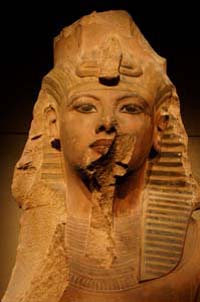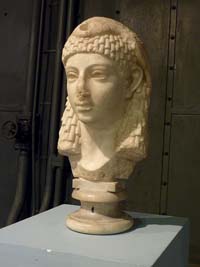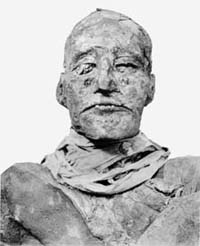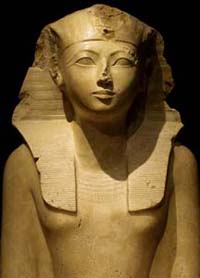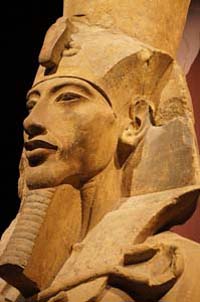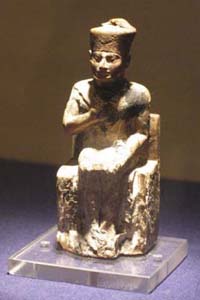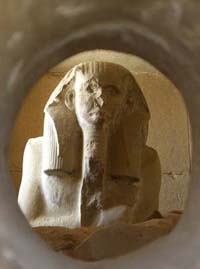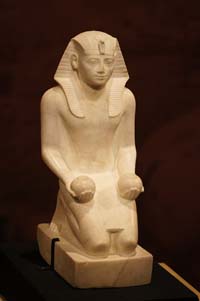Ancient Egyptian Pharaohs for Kids
Ancient Egyptian pharaohs weren't just the supreme leaders, they were also considered gods that held their thrones with divine appointment. The belief that the pharaoh had godlike power gave his rule an even greater meaning. It is hardly any wonder that the great and majestic pyramids were built to serve as a pharaoh's tomb.
The term pharaoh comes from a word that meant "great house" in terms of a kingdom or the palace of the king. The pharaoh's wife was considered the queen of Egypt and her title was the "Great Royal Wife." Some women became pharaohs themselves, but the majority of pharaohs were men.
The title was passed down through families, with the oldest son of the pharaoh at a given time eventually becoming pharaoh himself.
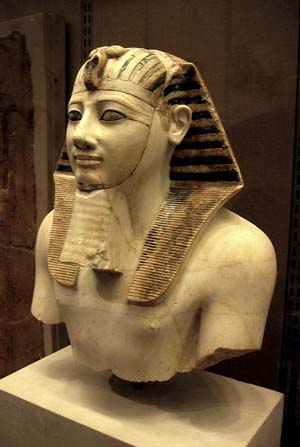
© Xuan Che - Pharaoh's Bust
Historians who study ancient Egypt divide its history through the different pharaoh dynasties. When one family stayed in power for a long time, that was considered a dynasty. There were about 31 dynasties in the 3,000 years of ancient Egypt's existence and about 170 rulers during that time period.
Symbols of the King
The pharaohs wore a variety of different items that symbolized their rule.
- The White Crown was worn by the pharaoh when he presided over issues concerning Upper Egypt.
- He used the Red Crown when dealing with Lower Egypt.
- The Double Crown symbolized his rule over both and consisted of the White Crown within the Red Crown.
- The Blue Crown is the famous blue and gold one often seen in art about ancient Egypt. This was a ceremonial or battle crown.
- The Atef Crown was worn in religious ceremonies.
- The Nemes Headdress was often worn as a death mask.
Other symbolic items were the Crook, the Flail, the Cartouche and the Serekh.
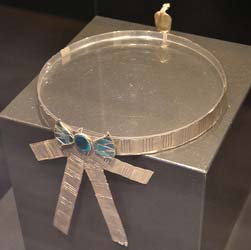
© Jan - 17th Dynasty Diadem
The Pharaoh's Life
The pharaoh began as the crown prince, which was usually the current pharaoh's oldest son. The crown prince spent much of his early life training to be the leader of the country, testing his endurance in long foot races and spending time in the royal stables learning to ride and train horses. They also learned to hunt and fish.
When the current pharaoh died, the crown prince attended the burial and then prepared to be crowned on the first day of the new season.
The new pharaoh was then the living incarnation of Horus and son of the god Ra.
The Pharaoh's Death
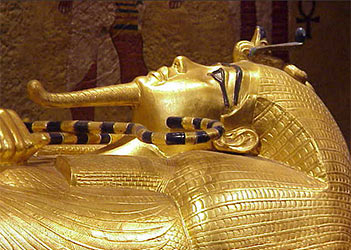
© Mary Harrsch - King Tut's Sarcophagus
The ancient Egyptians believed that preservation of the body would allow the soul to survive in the afterlife. They also believed that whatever was buried with the person would be of use to him in the afterlife. Thus the pharaohs were mummified and buried with a variety of objects to help them survive in the afterlife.
Burials were elaborate and the tombs eventually followed suit.
The first tombs were the bench-like mastaba tombs, but then a pyramid was built with several mastabas atop each other. This is now known as the Step Pyramid of Djoser. The pyramids that followed became the most famous pyramids people recognize today.
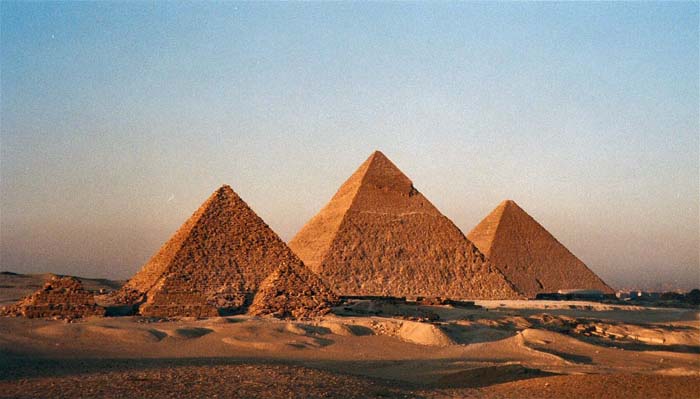
© Bruno Girin - The pyramids of Khufu, Khafre and Menkaure
Famous Pharaohs
- Tutankhamun - also known as King Tut, he restored worship of the old gods
Click here to learn more about King Tut (for Kids) - Cleopatra VII - a woman and last the Egyptian pharaoh
Click here to learn more about Cleopatra (for Kids) - Ramses III - the last New Kingdom pharaoh
Click here to learn more about Ramses III - Hatshepsut - a female pharaoh of the New Kingdom
Click here to learn more about Hatshepsut - Akhenaten - famous for outlawing worship of the old gods
Click here to learn more about Akhenaten - Khufu - built the Great Giza Pyramid
Click here to learn more about Khufu - Djoser - built the Step Pyramid
Click here to learn more about Djoser - Thutmose III - built the largest empire in Egypt
Click here to learn more about Thutmose III - Amenhotep III - ruled during the highest point of Ancient Egypt
Click here to learn more about Amenhotep III
